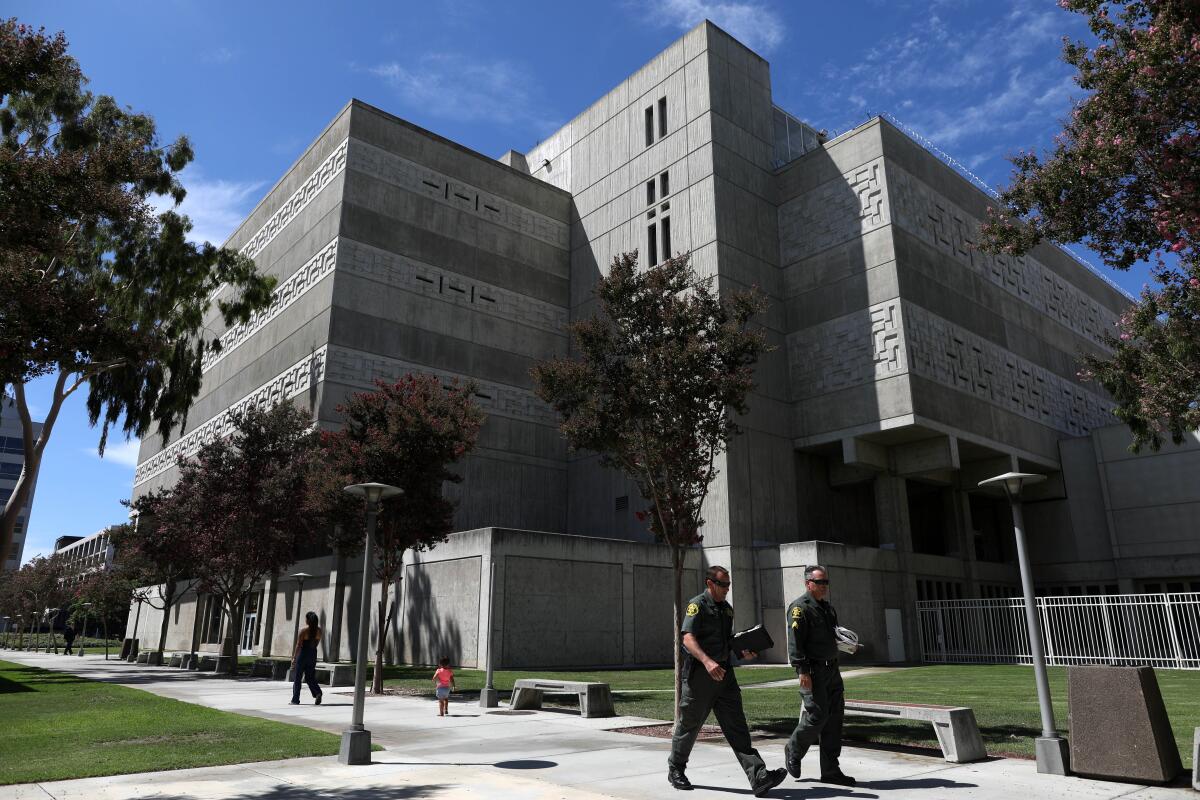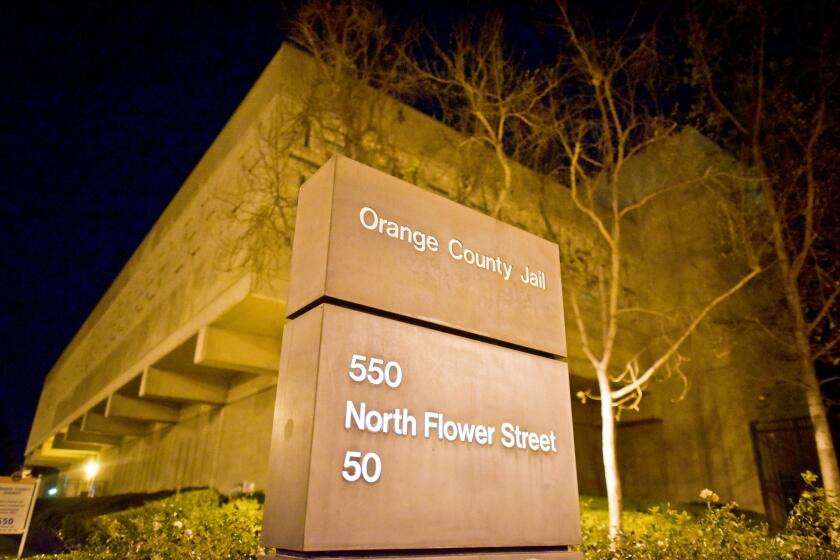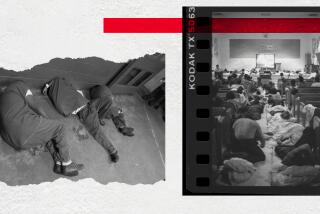Editorial: Bad bologna in O.C. jail should turn your stomach too

- Share via
Reports of rotten food served in Orange County jails ought to make you sick.
It doesn’t matter whether you’ve ever set foot in jail, or even the county for that matter. Unhealthful, spoiled or otherwise inadequate food in jails is inhumane and degrades not just the people who have to eat it. It is the public’s responsibility to ensure that incarcerated people are not subject to this kind of mistreatment, which will have continuing health consequences.
The bad food in Orange County jails includes bologna that “sometimes leaks a dark juice and is blotched with green spots,” according to a report by a group that organized to oppose jail expansion. Jail occupants have described soggy bread, sour milk and food that is so awful that they have to decide between getting sick or going hungry. Some reported that deputies leave food trays on the floor for up to an hour before occupants are permitted to pick them up, and that by that time bugs have gotten to it.
The report was released last month by the Stop the Musick Coalition (the name is a reference to the James A. Musick jail at the edge of Irvine). Jail opponents brought their concerns about the poor meals and other conditions to the county Board of Supervisors on Tuesday.
One of the girders buttressing the American criminal justice system is the right of people charged with crimes to have an attorney and to have that lawyer on hand when questioned by investigators and prosecutors.
There have long been complaints about the food in Orange County jails. In fact, food in pretty much any county jail, where people stay for relatively short periods (a week or two, on average, in California), and state and federal prisons, where they may live for years and sometimes decades, is so notoriously bad that an entire culture has developed around making tastier alternatives from packaged snacks that can be purchased at commissaries or scrounged, with or without permission, from around the facilities.
There are jailhouse cookbooks and YouTube videos by former and current residents who walk readers and viewers through the finer details of making cheesecake from coffee creamer. Or chi chi, a sort of junk food casserole, from ramen, various smashed chips and other things loaded with salt and sugar.
In Orange County, hot meals were suspended at the beginning of the pandemic for what the Sheriff’s Department said were reasons of health and safety. In the wake of the coalition’s report, the department denied many of the assertions and said hot meals had resumed.
Tradition tells us that inmates were once fed nothing but bread and water. Some might find it difficult to sympathize with people who are fed moldy sandwiches, and wonder, “Isn’t jail a place of punishment rather than luxury, and don’t we want people to have an additional incentive to stay out of trouble?”
The COVID-19 outbreak at San Quentin was predictable because of the prison’s layout and the simple truth that viruses will spread in packed spaces.
But in most California jails, more than half, on average, of residents are there pretrial, meaning they have not been convicted of anything. They’re often held only because they have no money for bail.
Even in prisons, where the residents have been convicted and are serving sentences, punishment should not include a willful attack on their bodies and spirits with bad or dangerous food. That’s no recipe for rehabilitation, and is poor preparation for rejoining communities upon release.
Society has humanitarian and pragmatic interests in ensuring that people come out of lockup in better condition than when they went in. Even if a jail stay is to be brief, it should offer people food that is both healthful and palatable. Meals that make it more likely that formerly incarcerated people will have diabetes, hypertension or other costly illnesses associated with poor nutrition do not serve us well.
Poor post-prison health ensures that we will continue paying the costs of incarceration long after release, in the form of hospital stays, medications and lost opportunities for former offenders to live productive lives that contribute to our communities.
And even people convicted of the most despicable crimes, who are locked up for the rest of their days — even they ought to be treated humanely. It’s something that civilized societies do. It benefits people both inside jail and prison and out.
More to Read
A cure for the common opinion
Get thought-provoking perspectives with our weekly newsletter.
You may occasionally receive promotional content from the Los Angeles Times.












